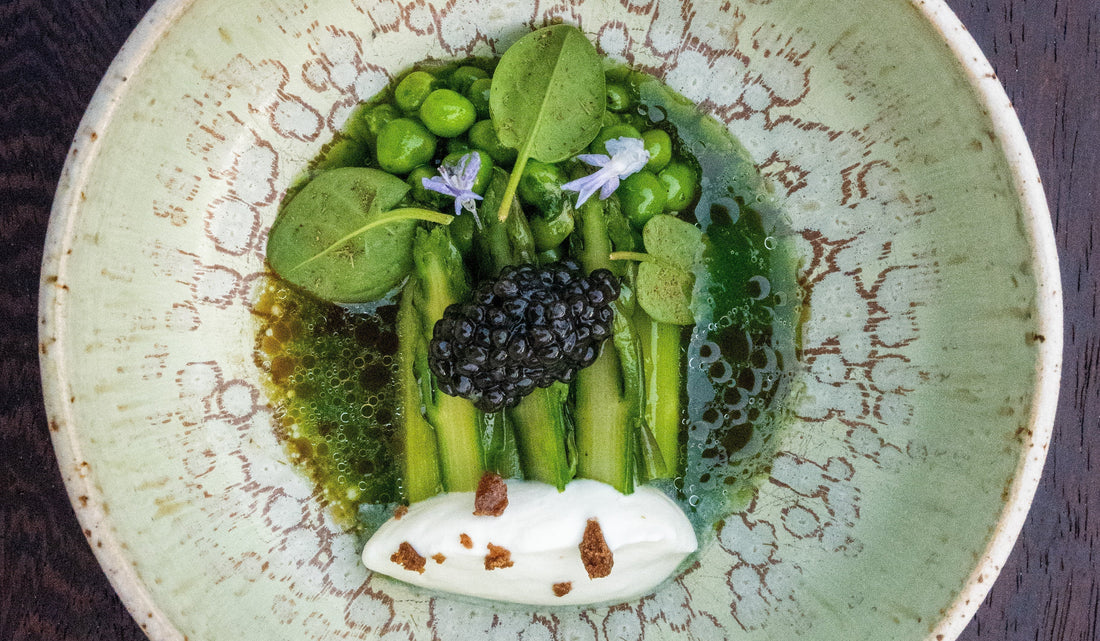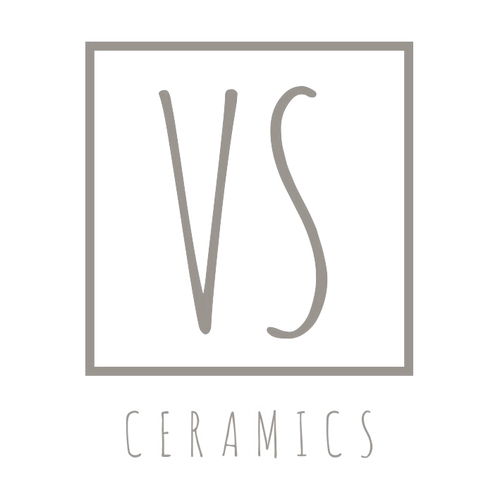Respect comes from knowledge, and knowledge requires commitment, investment, effort.
Tiziano Terzani
FOOD SAFE CERAMICS⠀⠀⠀⠀⠀⠀⠀⠀⠀
But is ceramic safe for food contact?
This is a question that many people don't ask themselves, but it's right to ask and ask yourself. Let's find out why together.
⠀
Not all ceramics are food safe, as there are significant differences between the various types of ceramics. The characteristics of ceramics depend on the type of clay used, the glaze applied, the temperature and the firing method.
Ceramic manufacturing techniques are mainly divided into two categories: low-temperature techniques, also known as terracotta or raku, and high-temperature techniques, which include stoneware and porcelain.
When using low-temperature techniques, having to fire at temperatures below 1000°C, strong fluxes are needed, such as lead and boron, to lower the melting point of the silica (i.e. the glass that creates the vitreous coating of the glaze, and which normally melts at 1700°C). Instead, when creating glazes for high temperatures, the fluxes needed to lower the melting point of the silica, this time to 1250°C (i.e. the temperatures for this category of ceramics), are potassium and sodium, naturally present in the feldspars, carbonates and vegetal ashes that make up ceramic glazes for high temperatures.
⠀
So how do I know if the ceramic I buy is safe for my health? I have to request MOCA certification.
Here is a brief description of the MOCA regulation.
What is a MOCA?
MOCA (Material or Object in Contact with Food) is a European regulation (CE 1935/2004), in English called FCM - Food Contact Materials, and in French MCDA - Matériaux au Contact des Denrées Alimentaires, for the regulation of all materials and articles intended to come into contact with food and beverages. Since the chemical substances present in materials in contact with food can migrate or transfer into the foods and beverages we consume, tests are required to ensure the protection of public health.
So is ceramic MOCA?
MOCA is to be understood as all ceramics produced for food use, in use and in shape. However, it must obviously be considered that not all ceramics are the same. Not only the production techniques can change, but also the decoration techniques, the materials used and the firing techniques.
Let's make a small distinction between the types of ceramics.
Low-temperature ceramics include terracotta, majolica or Faenza, third-fire decoration on porcelain and raku. These types of ceramics undergo techniques and firings at different temperatures, but always below 1000°C. In order to be able to fire at these temperatures, the glazes formulated for these techniques must be able to melt the glass component, i.e. silica (whose melting point would be 1700°C), at temperatures below 1000°C they use strong fluxes, such as lead and boron.
Stoneware and porcelain, on the other hand, belong to high-temperature fired ceramics. The intrinsic characteristics of these materials of not melting at temperatures >1250°C, favor the ideal base for the creation of glazes with a higher melting point. For these reasons, for high temperatures, it is sufficient to use less energetic fluxes - to lower the melting point of silica - and above all non-toxic. The components of a high-temperature glaze are in fact feldspars, clays, silica and fluxes such as potassium, sodium and calcium which are often contained in feldspars, in carbonates or in vegetal ashes.
It is therefore clear that any piece made with any ceramic technique must be subjected to specific tests to exclude its toxicity.
Who is required to have MOCA certification?
Any ceramic manufacturer, from the industrial to the small artisan, whether in possession of a regular VAT number or under the tax classification as a hobbyist, who sells products for food use, falling into the category of both high and low temperature ceramics.
Obviously you cannot self-declare your products compliant, but you must comply with the Moca regulation which provides:
Carrying out specific tests to detect the release of cadmium and lead;
The best practices manual (including a tracking and tracing system)
Labelling
A regular declaration of conformity
Registration with the regional ASL
How should I behave as a consumer?
It is our right as consumers to be informed about the origin and production of the products we purchase.
Remember to always ask, when purchasing functional ceramics, if the products you are purchasing have MOCA certification, remembering that you can request to view the declaration of conformity of the product you are purchasing.
Keep in mind that there are ceramic processes that are at high risk of releasing toxic substances, such as some types of majolica (today lead glazes are still used in the creation of this technique, for example in countries like Morocco) and raku (whose fascinating craquelures and typical black color are actually hotbeds of bacteria and layers in which raw materials can easily migrate into the contents of the dish). I therefore invite you to be particularly careful when approaching these types of ceramics and remember to always ask to see the certification.
Small informative chapter on Raku
I would particularly like to open a small chapter on this fascinating technique, of Japanese origin, since my products are often mistakenly confused with raku products.
Raku was born in Japan in the sixteenth century, in response to Sen no Rikyū's quest to renew the ritual of the tea ceremony.
Traditionally, ceramics were made using only manual techniques, as hands represent the spirit of man and clay symbolizes mother earth, where all things originate (Nino Caruso, Ceramica Viva). These ceramics were made with clays rich in sand or chamotte, as the main characteristic of raku is that it is extracted from the oven when the pieces are still incandescent, and then left to cool in the air. The pieces of this tradition have natural shades and unfinished and non-uniform textures.
It was Bernard Leach, with his trip to the East at the beginning of the 20th century, who introduced raku to the West. But it was only in the 1960s that the United States saw a renewal and modification of raku techniques. Contrary to tradition, Western raku (which corresponds to what you find on the market in Europe, unless otherwise stated), once the glaze reaches its melting point, is placed in containers or holes containing leaves, herbs, sawdust and covered hermetically. This creates a reduction atmosphere (that is, oxygen is missing) in which the smoke produced is deposited together with the carbon, produced by combustion, on the ceramic pieces, making them turn black where the glaze is missing. The pieces are then placed in cold water to stop the reduction process. The resulting effects are bright, shiny and metallic colors, very different from those of the original Japanese tradition.
To achieve these iridescent effects and this characteristic craquelé appearance, raw materials such as lead are used - which is harmful to human health. Furthermore, the craquelé effect is a real crack in the enamel, thus lending itself as an ideal place for bacterial proliferation and the migration of raw materials from the enamel towards the food or liquids present in the container.
On the contrary, high temperature ceramics (such as the products made by Vs ceramics) undergo a firing process between 1250 - 1300°C, promoting the vitrification of the clay part as well, resulting in a robust and compact body.
It is clear that this technique not only has a greater performance (in contemporary life it resists microwaves and dishwashers very well), but it is also safe from a food point of view.
In conclusion, being informed about the product you are purchasing is the fundamental key to obtaining a quality and safe product to bring into your homes!
Thanks for reading
Valentina
To download or view VS ceramics certifications click here.

